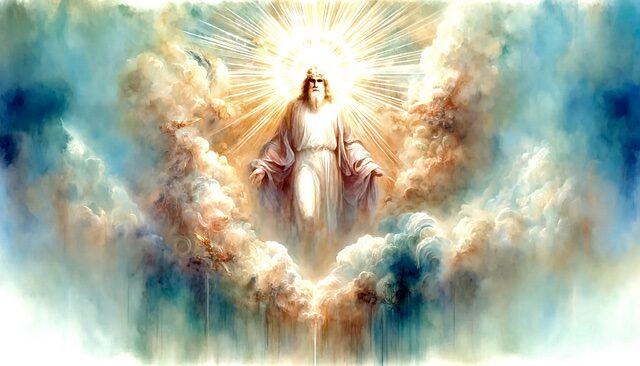The AA Grapevine published “Dr. Bob’s Last Major Talk” in June of 1973 from a transcript of a recording made in Detroit in December 1948. He had been diagnosed with cancer earlier that year and would die two years later, after a brief appearance at AA’s First International Convention in July of 1950. After making a passing reference to Bill W.’s “spiritual experience,” he stressed the simplicity of the AA program, a theme that appeared in the longer talk he gave in Detroit. Silkworth.net reproduced that article for those who didn’t have a subscription to the AA Grapevine. Dr. Bob said in the early days, before the Twelve Steps were written, they thought the answer to their problems was in the “Good Book,” and he was right.
We were convinced that the answer to our problems was in the Good Book. To some of us older ones, the parts that we found absolutely essential were the Sermon on the Mount, the thirteenth chapter of First Corinthians, and the Book of James.
Dr. Bob and the Good Oldtimers said The Greatest Thing in the World by Henry Drummond, The Sermon on the Mount by Emmet Fox, and the devotional The Upper Room, were the three main books recommended to “new prospects” before the publication of their Big Book, Alcoholics Anonymous. The Greatest Thing in the World by Drummond unpacked the thirteenth chapter of First Corinthians, and The Upper Room is a daily devotional that is still in print today. Dr. Bob also loved The Varieties of Religious Experiences (VRE) by William James, but would not “come on strong” about religion or philosophy because he didn’t want to scare people away. VRE was also an important resource to Bill W., the other co-founder of AA, who used it to help him make sense of his so-called hot flash spiritual encounter.
A Hot-Flash Religious Experience
After Bill W. entered Towns Hospital for the last time in November of 1934, his friend Ebby visited and again described how he had stopped drinking because he “got religion” with the Oxford Group. After Ebby left, Bill became depressed and cried out, “If there be a God, let Him show Himself!”
Suddenly my room was filled with an indescribably white light. I was seized with an ecstasy beyond description. Every joy I had known was pale by comparison. . . Then, seen in the mind’s eye, there was a mountain. I stood upon its summit, where a great wind blew. A wind, not of air, but of spirit. In great, clean strength, it blew right through me. Then came the blazing thought, ‘You are a free man.’ . . . “This,” I thought, “must be the great reality, the God of the preachers.” (From the A.A. conference approved book, Pass It On, p. 121)
Bill W. never again doubted the existence of God; and he also never drank again. When Bill told Ebby about his “spiritual experience,” Ebby didn’t know what to say. On the recommendation of others, he suggested Bill try making sense of his encounter with the “God of the preachers” by reading VRE. Bill began reading it as soon as Ebby left his room. The Varieties of Religious Experience would eventually become the only book mentioned by title in the Big Book.
Bill would eventually say he learned three principles from reading VRE. First, spiritual experiences like his were the product of utter desperation when all human resources have failed to solve the problem. Second, this experience involved an open admission of that defeat. The person needed to admit his own defeat as utter and absolute. Third, there was an appeal to a “Higher Power” that could take many forms, “and it might or might not be in religious terms.”
From his initial reading, Bill was exposed to the idea that a spiritual experience was not necessarily a religious one. Spirituality was not religion; and a Higher Power did not have to be the God of the preachers. This distinction became a cornerstone expression of what was to become the spiritual (but pointedly not religious) program called Alcoholics Anonymous. For more on Bill W’s spiritual experience, see: “The God of the Preachers.”
New Thought as Mind-Cure
In a previous article, “Emmet Fox Among the Alcoholics,” I suggested the AA sense of recovery has been guided away from the gospel before Bill W. heard the New Thought teachings of Emmet Fox. It even began before he used VRE to make sense of his “hot flash” spiritual experience. It started as he desperately tried to strengthen his will power to resist his compulsion to drink.
In New Wine: The Spiritual Roots of the Twelve Step Miracle, Mel B. said Bill W. had read and reread Science and Health with Key to the Scriptures by Mary Baker Eddy attempting to overcome his drinking problem by strengthening his will power. Later, he became convinced Eddy had not given due credit to Phineas Park Quimby for the help she received from him. Quimby is the generally acknowledged founder of New Thought. See Happy Lies and “New Thought, Old Lies” for more on Quimby and New Thought.
While New Thought organizations never became very large, their ideas have had wide acceptance in general society and also influenced AA. Early AA members [before 1939], according to Nell Wing, were urged to read James Allen’s As A Man Thinkth, Thomas Troward’s Edinburgh Lectures on Mental Science, and Emmet Fox’s Sermon on the Mount.
William James gained insight about his own depression and doubts about his self-worth from New Thought teachings, which he referred to as mind-cure. In the chapter titled: “The Religion of Healthy-Mindedness” in VRE, James said although the disciples of mind-cure often used Christian terminology, “one sees from such quotations how widely their notion of the fall of man diverges from that of ordinary Christians.” The spiritual part of man in mind-cure philosophy was partly conscious, but mostly subconscious. He then quoted Ralph Walo Trine from In Tune with the Infinite:
The spirit of infinite life and power that is back of all is what I call God. I care not what term you may use, be it Kindly Light, Providence, the Over-soul, Omnipotence, or whatever term may be most convenient, so long as we agree in regard to the great central fact itself. . .
The great central fact in human life is the coming into a conscious vital realization of our oneness with the Infinite Life, and the opening of ourselves fully to this divine inflow. In just the degree that we come into a conscious realization of our oneness with the Infinite Life, and open ourselves to this divine inflow, do we actualize in ourselves channels through which the Infinite Intelligence and Power can work. In just the degree in which you realize your oneness with the Infinite Spirit, you will exchange dis-ease for ease, inharmony for harmony, suffering and pain for abounding health and strength. To recognize our own divinity, and our intimate relation to the Universal, is to attach the belts of our machinery to the power-house of the Universe. One need remain in hell no longer than one chooses to; we can rise to any heaven we ourselves choose: and when we choose so to rise, all higher powers of the Universe combine to help us heavenward.
Mel B. said the principal benefit of New Thought for AA was that it transformed religious beliefs into a plan of action that individuals could follow for their own profit “here and now.” Further on in the VRE chapter, “The Religion of Healthy-Mindedness,” James said there was a psychological similarity between the mind-cure movement and the Lutheran and Wesleyan movements. When a believer in moralism and works, asks, “What must I do to be saved?” Luther and Wesley would reply “You are saved now, if you would but believe.” The mind-curers come with similar words of emancipation:
They speak, it is true, to the person for whom the conception of salvation has lost its ancient theological meaning, but who labor nonetheless with the same eternal human difficulty. Things are wrong with them; and “What shall I do to be clear, right, sound, whole, well?” is the form of their question. And the answer is: “You are well, sound, and clear already, if you did but know it.”
The adequacy of their message to the mental needs of a large fraction of mankind is what gave force to those earlier gospels. Exactly the same adequacy holds in the case of the mind-cure message, foolish as it may sound upon its surface; and seeing its rapid growth in influence, and its therapeutic triumphs, one is tempted to ask whether it may not be destined (probably by very reason of the cruelty and extravagance of many manifestations) to play a part almost as great on the evolution of the popular religion of the future as did those earlier movements in their day.
Mel B. thought an important idea in New Thought for AA was the accessibility and availability of God, or Higher Power, which is often described in New Thought teachings as “an All Powerful, Guiding, Creative Intelligence.” In the Big Book, on page 49, Bill W. wrote: “When, however, the perfectly logical assumption is suggested that underneath the material world and life as we see it, there is an All Powerful, Guiding, Creative Intelligence, right there our perverse streak come to the surface and we laboriously set out to convince ourselves it isn’t so.” There also was the use of the paramount term consciousness, which in New Thought described what one was thinking and feeling at all levels.
When many hundreds of people are able to say that the consciousness of the Presence of God is today the most important fact of their lives, they present a powerful reason why one should have faith. (Alcoholics Anonymous, p. 51)
Actually we were fooling ourselves, for deep down in every man, woman, and child, is the fundamental idea of God. It may be obscured by calamity, by pomp, by worship of other things, but in some form or other it is there. For faith in a Power greater than ourselves, and miraculous demonstrations of that power in human lives, are facts as old as man himself.
We finally saw that faith in some kind of God was a part of our make-up, just as much as the feeling we have for a friend. Sometime we had to search fearlessly, but He was there. He was as much a fact as we were. We found the Great Reality deep down within us. In the last analysis it is only there that He may be found. (Alcoholics Anonymous, p. 55)
Mel B. thought the term conscious contact in AA’s Step Eleven (“Sought through prayer and meditation to improve our conscious contact with God as we understood Him, praying only for knowledge of His will for us and the power to carry it out”) may have emerged from the Emmet Fox lectures attended by Bill W. his wife, and other AA members in the late 1930s. “Though it is a fairly ordinary term, it was probably used by Fox in lectures in the months just before Bill Wilson wrote the Twelve Steps.”
More Than the Great Reality
In Happy Lies, Melissa Dougherty critiqued the New Thought view of God as a universal, Divine Mind; as an “it.” She said New Thought made God an indifferent creative force, or energy; or the great reality Bill W. felt he encountered in his spiritual experience. This view of God was sometimes viewed as a “cosmic genie,” granting happiness and prosperity who only wants to give goodness to us. “New Thought author Emmet Fox wrote in his essay The Presence that “God never sends trouble, accident, temptation, nor death itself; nor does He authorize these things.” God can only cause good.
Similar to Gnosticism, New Thought teaches God is within us, “waiting to be awakened.” We are supposed to recognize our spiritual birthright, as we use affirmations, visualization, and meditation. “Everyone can access and harness the power of God.” And God progresses and changes over time in New Thought.
In direct contrast to New Thought, Christians are monotheists, believing in one, personal, holy God “who is separate from them.” Dougherty noted where our sin have separated us from God because of His holiness (Isaiah 59:2). As Christians, we must look outside ourselves, and not seek our oneness with the Infinite Life. God is omnipresent, “but not within creation (Jeremiah 23:23-24; Acts 17:24-25).” God is spirit (John 4:24); He is “infinite and immeasurable, matchless, incomparable, and immutable (Psalm 86:8-10; Jeremiah 10:6; Malachi 3:6; Daniel 7:14).” God is much more than the Great Reality Bill W. encountered with his hot flash spiritual experience.





